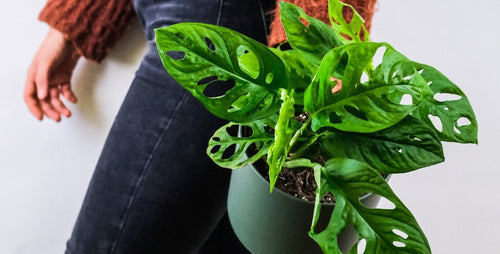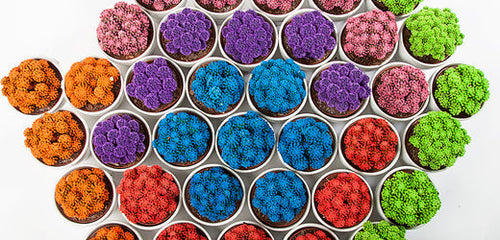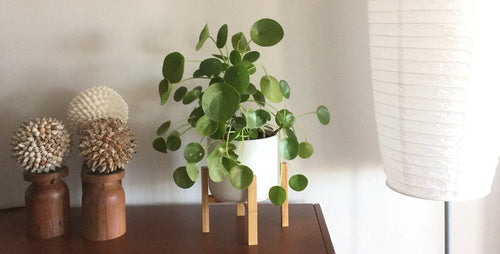 Hailing from South America, Mexico, the Caribbean, and Florida, peperomia is a well-traveled little plant that is equally at home hanging out indoors. Although it has tropical roots, peperomia can grow happily in nearly every room in your home. Or on your desk at work.
Hailing from South America, Mexico, the Caribbean, and Florida, peperomia is a well-traveled little plant that is equally at home hanging out indoors. Although it has tropical roots, peperomia can grow happily in nearly every room in your home. Or on your desk at work. This perky little plant is as versatile as it is cute. Peperomia varieties offer leaf diversity and color—and come in many variegated forms. It can hold its own, displayed singly in a decorative container on a living room side table or mantle. Peperomia varieties also enjoy sharing pots with other houseplants, adding texture and color. Terrarium lovers might use small plants inside glass enclosures.
Because peperomias thrive in bright indirect light, they do best near windows facing east or sitting in the interior of a room with south or west-facing windows. Many of these little beauties also tolerate low light—rooms with north-facing windows. You can also grow peperomias under fluorescent lights.
Here’s how Peperomia gets its name: It looks similar to the black pepper plant (Piper nigrum) which is the plant we all know because it produces edible black peppercorns. But don’t expect your peperomia varieties to produce any seasonings for your table; like all other houseplants, it should never be ingested.

The genus Peperomia is full of leafy surprises. Just when you think you’ve memorized the look of one peperomia, you find another variety that looks very different. In fact there are more than 1,000 types of peperomias in the world. For example, Peperomia orba, left, looks sort of like a bushy succulent. It’s also called pixie or teardrop peperomia.
Peperomia obtusifolia, top, grows upright, is nicely bushy, and produces waxy leaves. It is sometimes called baby rubber plant.
These slow-growing plants keep their shape and don’t need lots of pruning or reshaping. They are easy keepers for sure. Water plants when an inch below the soil surface feels dry; resist the urge to overwater because peperomias prefer it on the dry side.
Cute and easy care: perky peperomias may be the perfect houseplant.
Written by Karen Weir-Jimerson

















